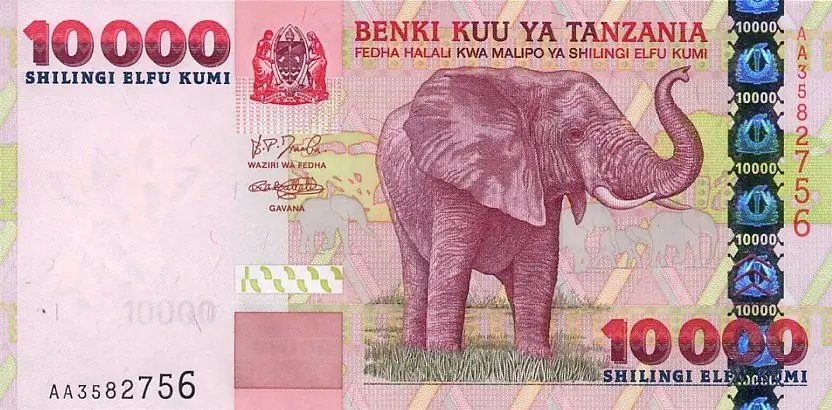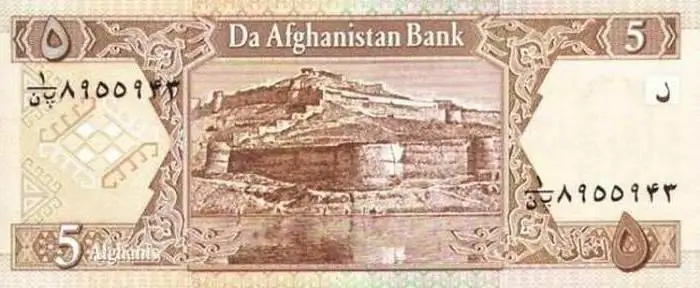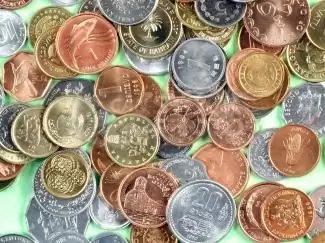2026 Author: Howard Calhoun | [email protected]. Last modified: 2025-01-24 13:10:41
Kazakhstan is one of the last countries to leave the USSR. And the state that gained independence needed its own national monetary units. The Kazakh currency is called tenge. It was put into use on November 15, 1993
History
Tenge got its name from the Turkic medieval coins made of silver: "tanga" or "denge". It is from them that the very word "money" comes from. The modern Kazakh currency continued the ancient history of the cities of Taraz and Otrar. It was in them that in the 13th century they began to mint coins.

The first national money of Kazakhstan was printed by the British company "Harrison and Sons". This required a special factory. At that time, it was not in Kazakhstan. It was opened only in 1995. Today, the Kazakh currency has 18 degrees of protection. The banking system of the state in modern times is very developed.
As a result, in terms of the degree of protection of the state currency, Kazakhstan was among the first at the world level. November 15 is declared the National Currency Day in the country. And at the same time a professional holiday for financiers.
Currency design
Banknotes in 1, 3 and 5 tenge have dimensions of 124 x 62 mm. The color of the front side is blue, gray-green and brown. All banknotes are watermarked with Kazakh ornaments. On the banknotes on the left side, under the denomination, there is an ornamental pattern. Various famous figures, formulas, landscapes and architectural structures are depicted in the center of the banknotes.

Kazakh currency in denominations of 10, 20, 50, 100, 200, 500 and 1000 tenge has dimensions of 144 x 69 mm. All denominations are made on white high-quality paper. The design of banknotes of each type of denomination is different, as well as their colors.
The 5000 tenge banknotes are 149 x 74 mm in size. Printed on white paper. The color scheme is dominated by purple and brown. On the front side is a portrait of the famous philosopher. To the left of it are watermarks. A metallized thread is stretched through the banknote, on which the number 5000 is printed and there is an inscription "Kazakhstan". This bill has additional anti-counterfeiting features.
In 2006, the Kazakh currency of a new type came into use. Protection has been improved and the design has been redesigned. The color palette and size of banknotes have changed. This allows you to navigate the banknotes accurately. All banknotes are made in the same style. There is a vertical image on the front side and a horizontal one on the back. Baiterek, one of the symbols of Kazakhstan, is placed on the banknotes.
The Kazakh currency, which is pegged to the ruble, looks quite nice. Money in the form of coins issued in 1993. Entered intocirculation in 1995. The coins are made of white nickel silver. On the obverse of coins in denominations of 1, 3 and 5 tenge there is an image of a 16-corner ornamental rosette. The year of minting is written on the left. And at the bottom right - a large inscription TENGE. Along the contour of the coin there is a beaded rim with a protruding edging. The coat of arms of Kazakhstan and the national ornament are depicted on metal money in denominations of 10 and 20 tenge.

Denominations
Now the state uses banknotes of six denominations - from 200 to 10,000 tenge. Coins have 7 denominations - from 1 to 100 tenge. In parallel with ordinary metal money, collectible and commemorative coins are minted. They are made of nickel silver, silver and gold. For example, in 2009 the Golden Leopard coin was issued. It is made of gold (999, 9 assay value and denomination of 500 tenge) and weighs 5 ounces.
Currency rate
How does the Kazakh currency relate to the ruble? In relation to Soviet money, the tenge exchange rate in 1993 was 1:500. Now the exchange rate against the ruble is 5:1, and the dynamics practically does not change.
Recommended:
Kazakh horses: description of the breed (photo)

Kazakh horse belongs to the steppe breeds. Her homeland is Kazakhstan. It is believed that her ancestors were Asian wild horses. As early as the fifth century BC. e. the breed was influenced by the Arabian, Mongolian, thoroughbred English, Don trotter and others
Currency of Hong Kong: description and photo

Not only countries can have their own national currency. This can also be done in certain areas. Since 1841, Hong Kong has been a British colony. And since then it has been a separate administrative region. It has autonomous rights, participates in international organizations as a separate member. Therefore, the currency of Hong Kong is a separate monetary unit
Currency of Tanzania: nominal and actual value, possible purchases, history of creation, banknote design author, description and photo

The article tells about the national currency of the African state of Tanzania. Contains information about the history of the currency, its rate in relation to other banknotes, real value, as well as a description and interesting facts about it
The currency of Afghanistan: the history of the currency. Curious information about the currency

Afghan currency Afghani has almost a century of history, which will be discussed in this material
What is a currency? Russian currency. Dollar currency

What is the state currency? What does currency turnover mean? What needs to be done to make the Russian currency freely convertible? What currencies are classified as world currencies? Why do I need a currency converter and where can I find it? We answer these and other questions in the article

